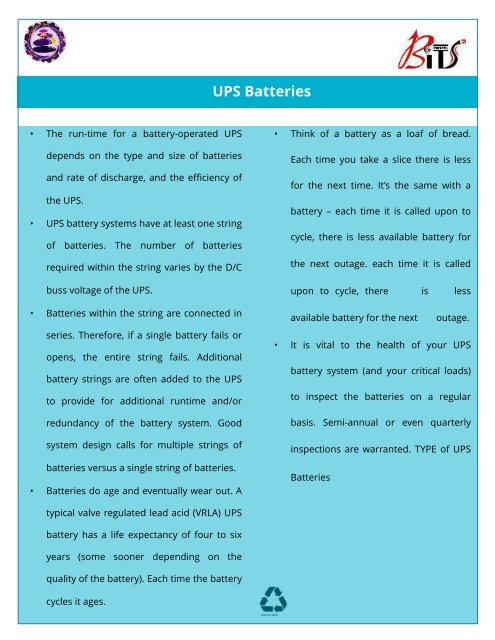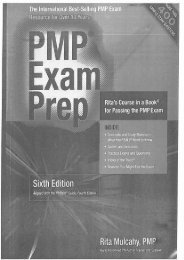Create successful ePaper yourself
Turn your PDF publications into a flip-book with our unique Google optimized e-Paper software.
UPS Bat t eries<br />
- The run-time for a battery-operated UPS<br />
depends on the type and size of batteries<br />
and rate of discharge, and the efficiency of<br />
the UPS.<br />
- UPS battery systems have at least one string<br />
of batteries. The number of batteries<br />
required within the string varies by the D/C<br />
buss voltage of the UPS.<br />
- Batteries within the string are connected in<br />
series. Therefore, if a single battery fails or<br />
opens, the entire string fails. Additional<br />
battery strings are often added to the UPS<br />
to provide for additional runtime and/or<br />
redundancy of the battery system. Good<br />
system design calls for multiple strings of<br />
batteries versus a single string of batteries.<br />
- Batteries do age and eventually wear out. A<br />
- Think of a battery as a loaf of bread.<br />
Each time you take a slice there is less<br />
for the next time. It?s the same with a<br />
battery ? each time it is called upon to<br />
cycle, there is less available battery for<br />
the next outage. each time it is called<br />
upon to cycle, there is less<br />
available battery for the next outage.<br />
- It is vital to the health of your UPS<br />
battery system (and your critical loads)<br />
to inspect the batteries on a regular<br />
basis. Semi-annual or even quarterly<br />
inspections are warranted. TYPE of UPS<br />
Batteries<br />
typical valve regulated lead acid (VRLA) UPS<br />
battery has a life expectancy of four to six<br />
years (some sooner depending on the<br />
quality of the battery). Each time the battery<br />
cycles it ages.





